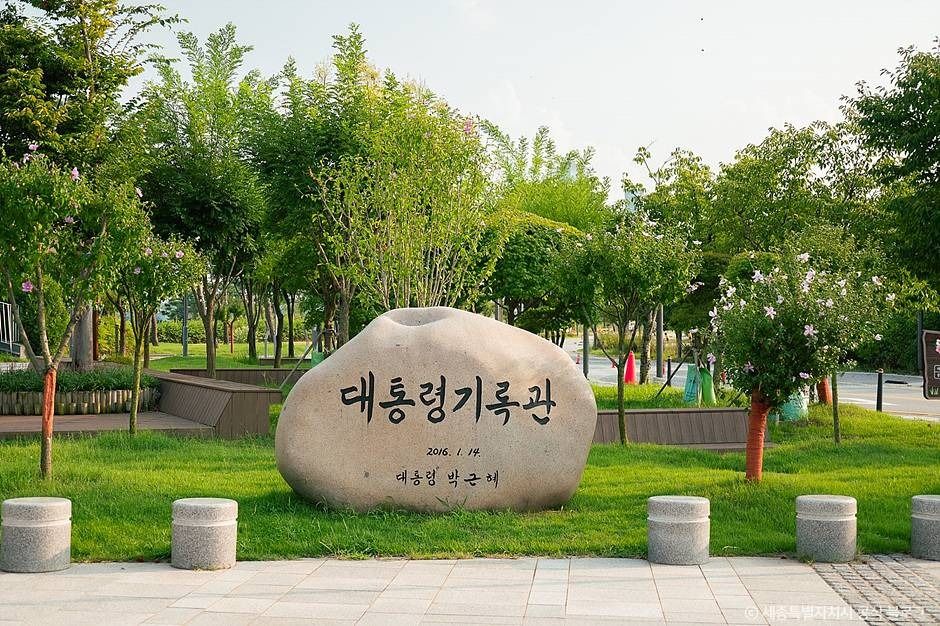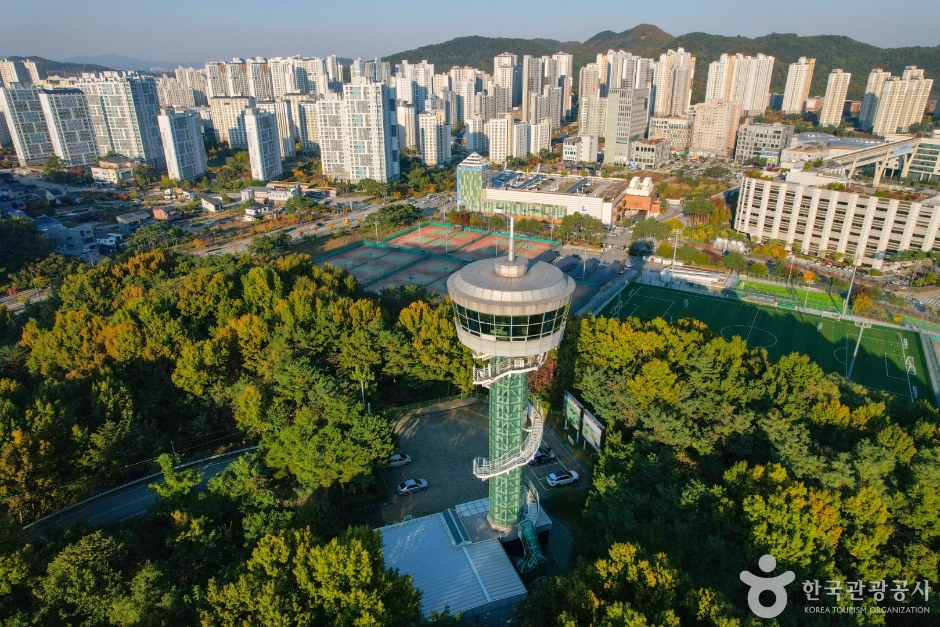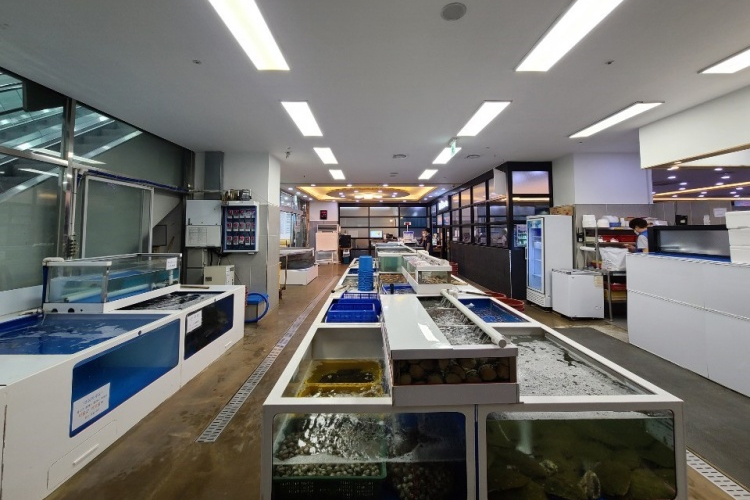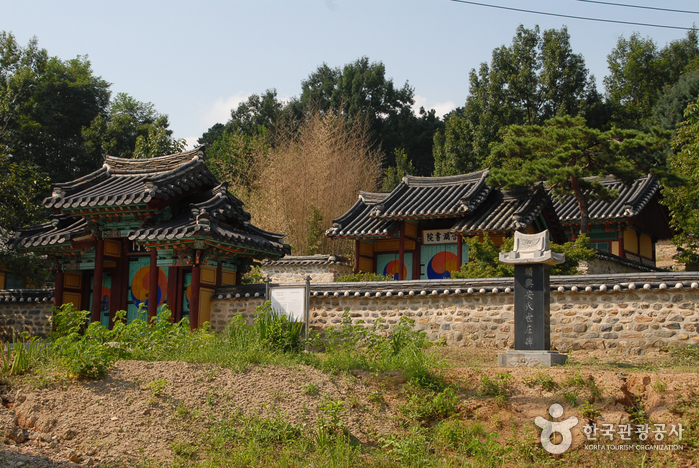Festividad Danoje de Sejong (세종단오제)
15.6Km 2025-05-15
Dasom-ro 216, Sejong
044-865-2411/2
Archivo Presidencial (대통령기록전시관)
15.8Km 2025-09-17
Dasom-ro 250, Sejong
Bosque Recreativo del Monte Jangtaesan (장태산자연휴양림)
16.6Km 2023-09-21
Jangan-ro 461, Seo-gu, Daejeon.
Se trata de un inmenso bosque de árboles gingko en la ciudad de Daejeon. Hay varias insalaciones como alojamiento, zona de acampada y un centro recreativo.
Observatorio Milmaru (밀마루전망대)
16.7Km 2025-09-17
Doum 3-ro 58, Sejong
Mercado de Pescado Crudo y Mariscos Jungbu (중부회수산시장)
16.7Km 2025-10-23
Doum 1-ro 106, Sejong
Lago Daecheong (대청호)
16.9Km 2024-03-25
Dong-gu, Daejeon.
El lago Daecheong es el tercer lago artificial más grande de Corea, y el nombre viene de las sílabas dae de Daejeon y cheong de Cheongwon-gun. El proyecto comenzó en 1975 y acabó en el año 80. Se proporciona agua a la gente en las áreas de Daejeon y de Cheongju. Es un lago tan grande que funciona como una fuente del abastecimiento de agua para la región entera. El lago Daecheong es famoso por su agua clara, el reflejo de los picos de la montaña en él, y la niebla matutina. El monte Yasan contribuye a la belleza del paisaje. La niebla que viene por la mañana es muy romántica en el agua, y durante el día el cielo azul y las nubes blancas trae en él diverso sentido de la armonía. En la oficina de la promoción de la presa, usted puede aprender sobre la operación diaria de la presa, y también ver presentaciones en multimedia, los acuarios y otras cosas interesantes. Muchos pájaros vienen en su estación y anidan en el lago Daecheong.
Mok hyang jae / 목향재
17.0Km 2025-03-05
33, Mannam-ro 6-gil, Sejong-si
+82-10-8666-1217
Mokhyangjae, which literally means a ’house with tree fragrance,’ is a traditional Korean pension house which stands alone beside a boulevard surrounded by apartment complexes. Entering the garden with a low fence, you will be greeted by the antique two-story Korean style building. The building of Mokhyangjae was built in the style of a palace with red pine tree used for the crossbeam and pillars. With a feeling of magnificence and coziness at the same time, the rafter ceiling shows the wood grain and the sliding door pasted with traditional Korean paper adds to the flavor of the traditional Korean style house.
The rooms are composed of the traditional Ondol Room where one or two persons can stay; the Ordinary Room is equipped with a bedroom and an attic; and the Deluxe Room has a wide traditional Ondol room for guests from solo travelers to families. The bedroom and the living room also have traditional display cupboard and heavy hardwood table which had been used by the owner of the house, adding to the flavor of the traditional Korean style house. Equipped with cartoons and picture books, the attic is a favorite place of children. Scattered with stepping stones, the front yard of the house is filled with Sansuyu, magnolia, and cherry trees that blossom in spring.
Mokhyangjae is running a traditional teahouse as well. The teahouse was opened thanks to the Chinese husband who enjoys tea, and most of the teas are imported from China. You can have a taste of dozens of kinds of teas including puer tea and red tea, along with a simple tea confectionery.
Academia Neoconfuciana Hapho Seowon (합호서원)
17.5Km 2022-09-20
Wonhapgang 1-gil 262-6, Yeondong-myeon, Sejong
Hapho Seowon es el lugar en el que las tablas de Munseonggong An Hyang, el precursor del confucianismo Sung, de la era Goryeo, están consagradas. El lugar fue construido en 1716 como el santuario Anjabyeolmyo por An Gyeong-sin, An Gyeong-in, An Gyeong-jeong y An Gyeong-sang, quienes fueron los 15º descendientes de An Hyang, y en él se realizaban ceremonias conmemorativas cada año, el 3 de marzo y el 9 de septiembre del calendario lunar. En 1843, el santuario fue renombrado como Hapho Seowon. El santuario fue demolido por orden del regente Daewongun durante el reinado del rey Gojong. Más tarde, los descendientes de An reconstruyeron el santuario en el templo Haphosa para realizar ceremonias en honor de An Hyang. En 1949, la academia neoconfuciana se construyó tras el consentimiento de 218 estudiosos del confucianismo de Corea.
Finca Presidencial Cheongnamdae (청남대)
18.2Km 2023-04-13
Cheongnamdae-gil 646, Munui-myeon, Sangdang-gu, Cheongju-si, Chungcheongbuk-do.
Cheongnamdae es una finca presidencial que se encuentra ubicada en los alrededores de la Presa Daecheong, en Cheongju, provincia Chungcheongbuk-do. En la ceremonia de construcción de la Presa Daecheong, en el año 1980, estuvo presente el presidente Chun Doo-hwan, quien después de observar la belleza del ambiente que lo rodeaba, ordenó levantar esta finca en junio de 1983. En tan solo seis meses, en diciembre de ese mismo año, finalizó la construcción.
El nombre del lugar, Cheongnamdae, significa “el Cheong Wa Dae Sureño de las Tierras Cálidas”, y, se encuentra situado en una superficie amplia. Casi todos los presidentes del país han pasado las vacaciones en este lugar, entre 4 y 8 veces al año. Desde las épocas del presidente Rhee Seung-man ha habido un total de 4 fincas vacacionales, distribuidas en 4 regiones; pero durante la presidencia de Kim Young-sam han sido clausuradas, con excepción de Cheongnamdae. A lo largo de 20 años, esta finca ha estado cerrada al público, pero el 18 de abril del 2003, con la llegada al poder de Roh Moo-hyun, se cedió el derecho de administración a la provincia de Chungcheongbuk-do, permitiendo así el acceso al público en general.
En particular, en el centro ecológico del pantano (990 ㎡) se instaló una fuente musical, y en la senda del lago (8 km) se asentaron rutas para el montañismo y para las caminatas, de tal manera que es ideal para apreciar el paisaje espléndido del lago Daecheongho.
Presa Daecheong (대청댐)
18.5Km 2025-08-13
Daecheong-ro 618-136, Daedeok-gu, Daejeon
La presa tiene una dimensión de 72 m de altura y 495 m de longitud, está compuesta por las presas de gravedad en concreto y de piedra, presentando un estilo complejo. Se encuentra ubicada en el área de encuentro de Daejeon y la provincia Chungcheongbuk-do, hacia la cuenca baja del río Geumgang. Subiendo al observatorio (pabellón de descanso), podrá apreciar mejor la belleza del paisaje del lago Daecheongho, y, en la Sala Promocional del Agua, podrá observar variedad de materiales informativos sobre el agua. En particular, en la plaza del césped, que está asentada de manera limpia y agradable, podrá descansar libremente. En las áreas del lago, también hay variedad de restaurantes y casas de comidas regionales, que sirven el maeuntang (estofado picante de pescado) y el jangeogui (anguila condimentada a la parrilla), entre otros.





 Español
Español
 한국어
한국어 English
English 日本語
日本語 中文(简体)
中文(简体) Deutsch
Deutsch Français
Français Русский
Русский